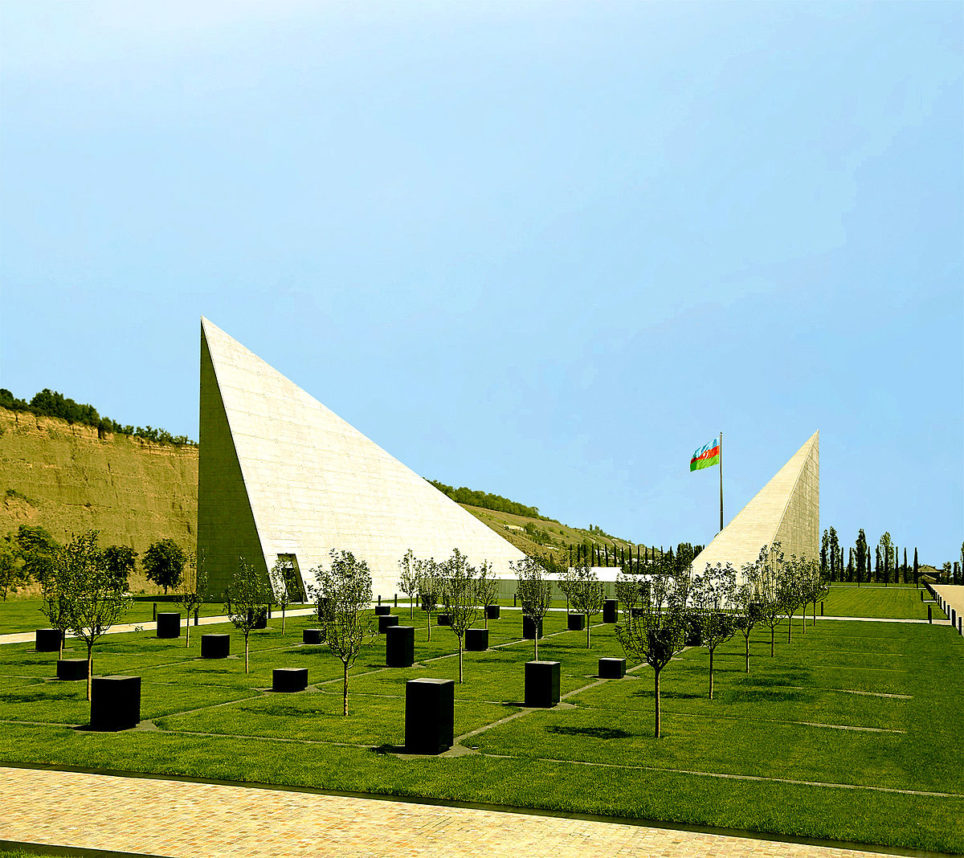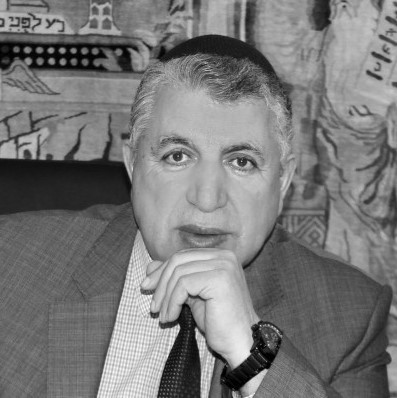
I try to walk through Azerbaijan’s capital Baku’s Old City – a UNESCO World Heritage Site – as much as possible. It’s a beautiful place to stroll and view so much of our national history, and to take in the charming Old City ambiance and the fresh air of the nearby Caspian Sea. I’ve walked through it so many times, yet each time I am taken aback by some of the history, especially when I walk past the entrance wall in the Palace of Shirvanshahs. On that ancient entrance wall one cannot help but notice something unsettling… These are pretty old looking bullet holes, and they are a reminder of what we often take for granted today, and a reminder of what happened not so long ago.
These bullet holes are reminiscent of the tragic days of March 1918, when Baku and other cities of Azerbaijan were subjected to unprecedented brutality. These events are known as March Genocide. It is a dark page in our nation’s history, when invading Armenian Dashnaks, supported by Bolsheviks and their fear of our freedom, committed pogroms all across Azerbaijan, targeting thousands of Azerbaijani Muslim civilians, as well as many members of my Mountain Jewish community in Quba.
After the 1917 October Revolution in Russia, losing Baku and its vast oil reserves was out of question for the Bolsheviks. Their leader Vladimir Lenin even once said that the Soviet Russia would not survive without the Baku oil. To fully control Baku and its oil, Bolsheviks, led by Armenian Stepan Shahumyan, and Armenian Dashnaks (members of the radical Armenian nationalist and socialist party ‘Armenian Revolutionary Federation’) created an alliance against Baku’s Azerbaijani Muslim population, who were opposing the Bolshevik-Dashnak subjugation of Azerbaijan.
The atrocities against Azerbaijani residents of Baku culminated, at the end of March 1918, in a real genocide, resulting in the horrific massacre of over 12,000 Azerbaijani Muslims, many of them women and children, within just a few days. One in five Azerbaijanis living then in Baku were murdered by Armenian Dashnaks, with Bolsheviks’ assistance. The unarmed civilian Azerbaijani population of Baku had no chance against the heavily armed 10,000-strong Dashnak-Bolshevik forces. This was an unusually brutal set of events. Armenian nationalists murdered entire families, burned down homes, created mass graves of women and children, with so many mutilated in the most horrific manner possible. Many were unidentifiable because they had been decapitated. A young woman was nailed to a wall, while she was still alive. Elderly couples were thrown into burning buildings to die most painfully. Children were shot in a row, standing with their mothers. A group of civilians were massacred right in front of the Shirvanshahs’ Palace entrance wall, hence the bullet holes I mentioned earlier. Bodies were thrown into wells and into the Caspian Sea. I can’t help but see the parallels between what the Armenian Dashnaks did and what the Nazis would later do.
Later an investigation by the first Republic of Azerbaijan (1918-20) would reveal that many Jews living in Baku did whatever they could to save Azerbaijani Muslims from this slaughter.
This strong Muslim-Jewish solidarity and friendship enraged the invaders. When the anti-Azerbaijani pogroms spread throughout the rest of Azerbaijan resulting in the killing of overall 50,000 Azerbaijanis, my home region of Quba with its large Mountain Jewish population became one of the centers of this genocide. In Quba, Muslim and Jewish Azerbaijanis came together to defend their nation. Approximately 3,000 Jews were murdered by Armenian Dashnaks in Quba. Their crime was simply siding with their Muslim brothers and sisters, and their homeland, Azerbaijan, a country that for centuries had protected Jewish people from harm and hatred. In 2007, a mass grave of bones and skulls was discovered and unearthed in Quba, of thousands of Jews and Muslims who had died together for no greater crime than their peacefulness, loyalty, and love for freedom.
Yes, it mystifies me to walk past this wall in the Old City of Baku, even 100 years after these brutal crimes against humanity took place, perhaps especially because the Armenian massacres and ethnic cleansings of Azerbaijani civilians continues, peaking again in 1992 with the Khojaly Massacre, and a constant threat even now, while Armenia still occupies twenty percent of our sovereign land. But I also realize as I walk through Baku, alongside the diverse and flourishing society that I call home, that no matter what they have done to us, we still have come through in peace, and with the courage and conviction that has protected tolerance and multiculturalism in Azerbaijan for the same 100 years. That history of tolerance goes much further back than 100 years, and I know it will continue into the next 100 years, and the next 100 to follow. We are made of something indestructible; the same strong fabric that our enemies have tried to destroy in the past – and the one that carries us so proudly and boldly into a bright and hopeful future. On this 100th Anniversary of the March Genocide, I pray for our continued peace and tolerance; those lasting qualities of Azerbaijan that have protected us all along.






















 More news and opinions than at a Shabbat dinner, right in your inbox.
More news and opinions than at a Shabbat dinner, right in your inbox.